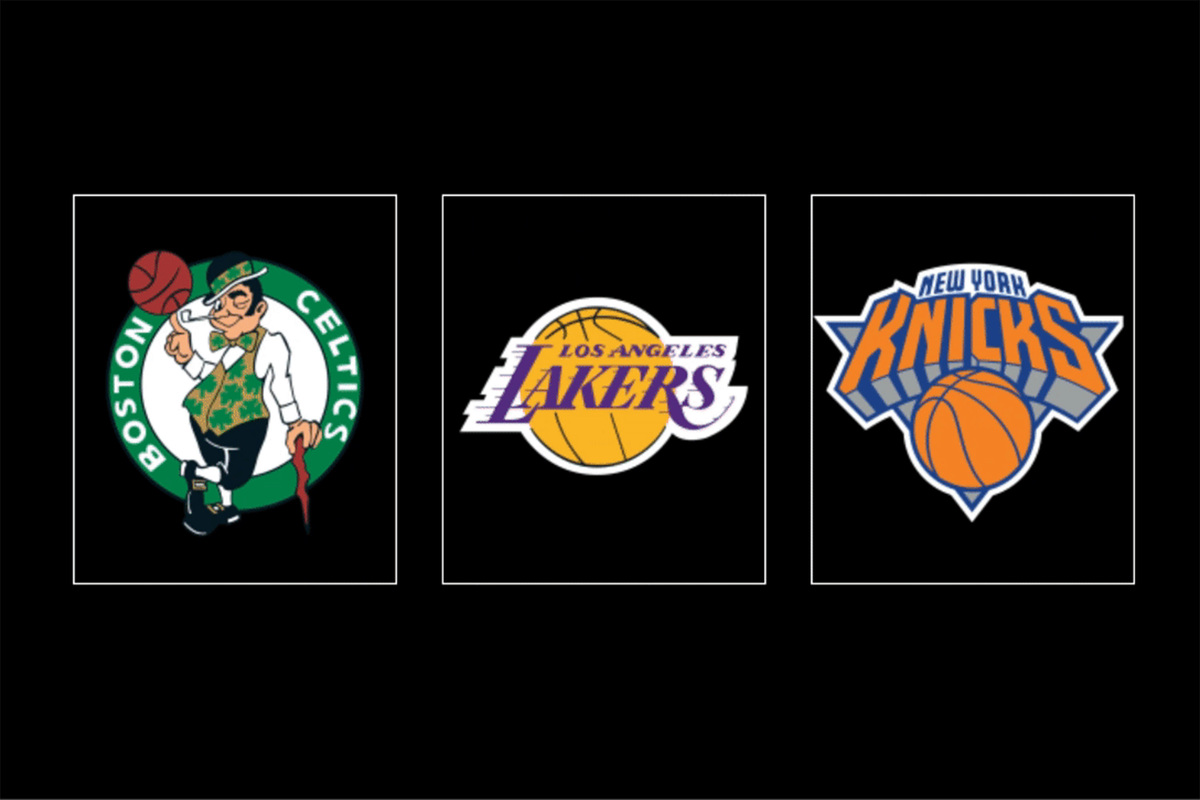Editor’s note, May 28, 2024: This piece, which was originally published before the Eastern Conference finals, has been updated to account for the Boston Celtics’ series sweep against the Indiana Pacers—and for the injury to Tyrese Haliburton, which forced him to miss two games.
There isn’t any region in the United States that cares less about college football than New England. But as the Boston Celtics reach the Finals for the second time in three years, New England’s NBA team inspires a chant straight out of the college football playbook: The Celtics ain’t played nobody!
The Celtics earned the playoffs’ top seed with a 64-18 record in the regular season, but their journey through the first three playoff rounds could hardly have been easier. In the first round, they hammered an eighth-seeded Heat team missing Jimmy Butler; in the second, they coasted against a fourth-seeded Cavaliers squad missing, at various points, Jarrett Allen, Donovan Mitchell, and Caris LeVert; in the conference finals, they pushed past a sixth-seeded Pacers group missing Tyrese Haliburton for half of the sweep. No wonder the Celtics have incited claims that theirs is the easiest path ever to the Finals.
That isn’t actually true throughout all of NBA history. Back in the early days, top seeds sometimes needed to win only one round to reach the Finals. In both 1959 and 1961, for instance, the Celtics received a bye to the conference finals, then beat the under-.500 Syracuse Nationals—and voilà, two Finals berths! (Was Bill Russell a fraud?!?!?! The greatest thread in the history of forums.)
But the 2023-24 Celtics do have the easiest Finals path since the start of the modern playoff format in 1983-84 (the first 16-team postseason).
By record alone, the Celtics don’t stand out against the past several decades of Finals teams. Between the 46-win Heat, 48-win Cavaliers, and 47-win Pacers, Boston’s conference playoff opponents averaged 47 wins in the regular season, which ties only the 19th-lowest opponent total among all 80 Finals teams since 1983-84.
Easiest Paths to Finals Since 1984
Note the four mid-’80s Lakers teams amid the top five here. (Was Magic Johnson a fraud, too?!?!?!) Outside of the Lakers, the West wasn’t very good in the 1980s. And back then, with several rounds of expansion still to come, 16 of 23 teams reached the playoffs—which meant much easier first-round opponents for top seeds.
Also note that of the eight teams on this chart, seven won the title that year—and the only team that lost (the 1984 Lakers) did so in seven games against another team on the chart (the 1984 Celtics). Clearly, an easy path to the Finals doesn’t prevent a team from winning there—so just because the 2023-24 Celtics haven’t had to stress test themselves yet doesn’t mean they’re doomed once they face a more evenly matched opponent.
However, the reason for the Celtics’ smooth road thus far is star injuries, which have reduced their opponents’ quality by a significant margin. And when we factor in injuries, the Celtics leap much higher up this “easiest path” leaderboard. If you don’t care how we accounted for injuries, feel free to skip the next couple of paragraphs until you find the next chart. But if you do care: We used box plus-minus on Basketball-Reference to identify the most valuable players for every finalist’s playoff opponents, then adjusted those opponents’ records downward if those players missed some or all of the playoff series.
Here’s how that works in practice. B-Ref’s box plus-minus conversion says that Jimmy Butler was worth 9.2 wins above replacement this season. Because 46 - 9.2 = 37.2, we can estimate that the version of the Heat that Boston faced was more like a 37-win team. That might not be a perfect encapsulation of team quality, but it sounds about right in capturing the diminishing effect of Butler’s injury. (Sure, the Butler-less Heat were overmatched against Boston, but they comfortably beat the 39-43 Bulls in the play-in round.)
Or, here’s how the Cavaliers stacked up against Boston in the second round, by this methodology:
If injury-free: 48-win team
Games 1-3 (missing Allen): 40-win team
Game 4 (missing Allen and Mitchell): 29-win team
Game 5 (missing Allen, Mitchell, and LeVert): 26-win team
Average across series: 35-win team
And for the Pacers in the conference finals, we compared their actual record with their adjusted record for the two games Haliburton missed, yielding the estimate that the team Boston swept was a 40-win group on average.
We repeated that process for every playoff opponent for every finalist since 1984, which gave us new, injury-adjusted opponent ratings. And here, the Celtics jumped all the way to the top of the list of easiest Finals paths in modern playoff history:
Easiest Injury-Adjusted Paths to Finals Since 1984
The previous top team benefited from a combination of inferior opponents and major injuries. The 1985 Lakers are one of three mid-’80s Lakers squads in the top five; they take the top spot because they faced a 36-46 Suns team missing its top three scorers in the first round—unsurprisingly, they swept with wins by 28, 17, and 16 points—and because the Nuggets’ Alex English and Fat Lever were injured midway through the conference finals.
The 2007 Cavaliers are a surprise team this high up the list because they faced a strong challenger (the top-seeded 53-29 Pistons) in a memorable conference finals. But in the first two rounds, they faced a 41-41 Wizards team missing Caron Butler and Gilbert Arenas (a second-team All-NBA honoree that year), then a 41-41 Nets squad.
One major factor that applies across all the teams on this chart is conference imbalance, which means fewer strong teams that a contender could potentially face en route to the Finals. In 2006-07, teams in the East won just 43 percent of interconference games. In 2023-24, similarly, teams in the East won just 42 percent of interconference games, and the Celtics finished with a record 14-game gap over the no. 2 seed in the East. Boston would have had a relatively easy path even if all its opponents had been healthy (or even if all its potential opponents, like the Bucks, had been healthy in the playoffs).
In the 1980s, when the Lakers dominated the West, that dynamic was flipped: Western teams lost the conference battle every year of that decade. From 1984 through 1987, the Celtics reached four Finals in a row, and the Lakers reached three. But the best mid-’80s teams beyond that duo were the Bucks, 76ers, and Pistons—all of whom challenged the Celtics in the East, not the Lakers in the West.
Decades later, however, nobody remembers the Lakers’ cupcake-strewn routes to the Finals during Magic’s prime. The 1985 injuries to English, Lever, and the Suns trio were lost to history; the Lakers’ 1987 victory over a team with a losing record in the conference finals (!) is mere trivia, not any reason to discount the legacy of the junior sky hook or their victory in the final championship clash between Magic and Larry Bird.
By the same token, if the Celtics win the title this year, their easy path will be relegated to a footnote in their championship story. After all, no. 1 seeds should have easier playoff matchups, and almost every Finals run nowadays could be smeared by an injury asterisk. From 1984 through 1999, 47 percent of teams that reached the Finals benefited from at least one key opponent injury along the way, by the definition we’re using for this exercise. But in the 21st century, a massive 82 percent (40 of 49) of finalists have—including every finalist in the 2020s.
That streak will hold for all the potential finalists this year. We’ve covered Boston’s opponents already. The Mavericks avoided Kawhi Leonard for most of the first round. And while the Timberwolves certainly would have defeated the Suns even if Grayson Allen had remained healthy, he was valuable enough in the regular season to qualify as a key injury.
Not all of those injuries are created equal, and the Celtics’ opponents have suffered worse losses than most teams. By our methodology, Boston set a new “record” among finalists for the largest gap between its opponents’ regular-season quality and their injury-adjusted playoff quality. (The previous record belonged to the 2021 Suns, who reached the Finals by beating a Lakers team with an injured Anthony Davis, a Nuggets team with an injured Jamal Murray, and a Clippers team with an injured Kawhi.)
That reality, along with Boston’s near decade of playoff runs without trophy no. 18, has forced “championship or bust” stakes onto the title favorites. In the moment, Boston’s competition might seem laughable or historic—but soon enough, that binary outcome is all that will matter anyway.

